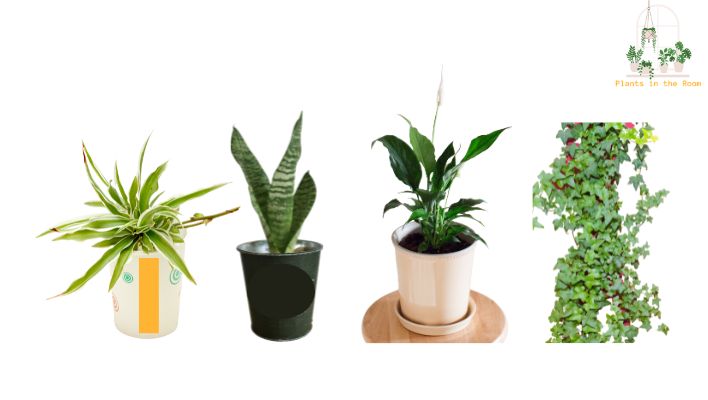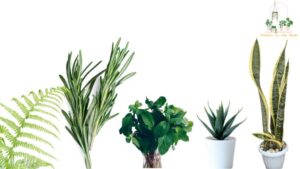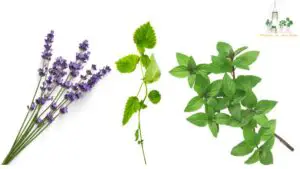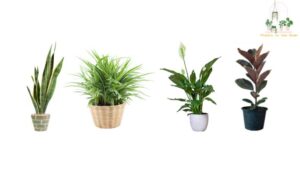This article covers the following areas –
- What Is the Connection Between Indoor Plants and Respiratory Health
- Best Indoor Plants for Asthma and Respiratory Health
- Factors to Consider When Choosing Indoor Plants
- In Conclusion
In a world increasingly cognizant of wellness and good health, there has been a surge of interest in indoor plants and their potential benefits. One specific area of interest has been the effect of indoor plants on asthma and respiratory health. This article aims to elucidate this connection and provide a guide to the best indoor plants for asthma and respiratory health.
Indoor plants can significantly enhance respiratory health, particularly for those suffering from asthma. Plants like Spider Plant, Snake Plant, Peace Lily, and English Ivy purify indoor air, regulate humidity, boost oxygen levels, and reduce mold presence.
Continue reading the article to delve deeper into how these indoor plants can promote a healthier living environment, their individual properties, and the necessary precautions. Detailed information will help you make informed decisions about introducing these green allies into your home for better respiratory health.
What Is the Connection Between Indoor Plants and Respiratory Health
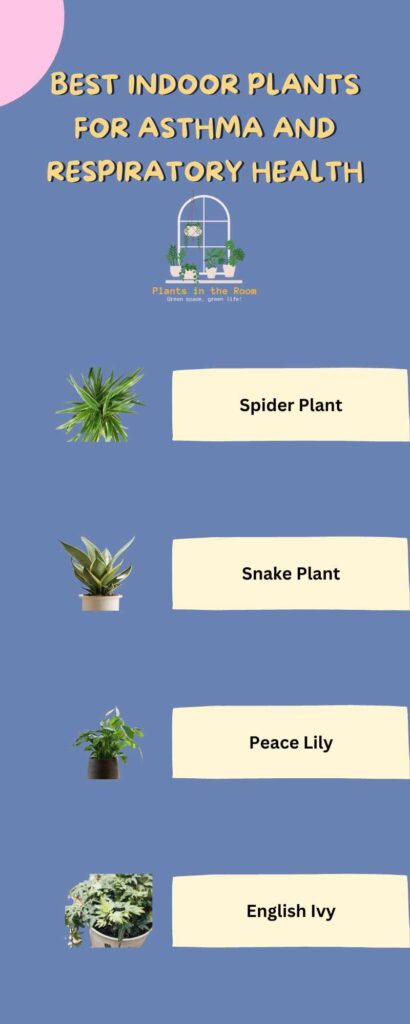
In our quest to establish an environment conducive to respiratory wellness, it’s essential to understand the relationship between indoor plants and respiratory health. This connection is far from arbitrary; it’s rooted in the mechanisms of plant biology and the innate ability of these green companions to foster a healthier atmosphere in our homes.
By delving into the aspects of air purification and humidity regulation, we can uncover why some indoor plants have been tagged as beneficial for individuals dealing with asthma and other respiratory conditions.
Nature’s Air Purifiers
We often think of air pollution as an outdoor problem, but the truth is indoor air can be just as polluted, if not more. Paints, furnishings, cleaning products, and even certain types of flooring can release harmful volatile organic compounds (VOCs) into the air. In fact, these indoor pollutants can exacerbate or even trigger asthma symptoms and other respiratory issues.
That’s where indoor plants come in. Through a process called phytoremediation, indoor plants absorb these pollutants, effectively detoxifying the air we breathe. As plants use carbon dioxide for photosynthesis, they absorb these harmful particles and VOCs.
The toxins are then broken down into harmless substances, which the plants use for growing. This simultaneous purification and growth process make indoor plants a renewable and ever-vigilant solution to indoor air pollution.
Humidity Regulation
Beyond air purification, indoor plants contribute significantly to maintaining the right humidity levels in our homes. The role of plants in managing indoor humidity has to do with a fundamental process of plant life called transpiration.
In transpiration, water is drawn up from the roots, circulated through the plant to deliver necessary nutrients, and finally released into the atmosphere through small pores on the underside of the leaves. This release of moisture increases the humidity level in the immediate environment.
Maintaining proper humidity levels is crucial, especially for those dealing with respiratory issues. Dry air can cause the lining of the throat and nasal passages to dry out, leading to discomfort and exacerbating respiratory symptoms. Introducing indoor plants that release moisture into the air can help mitigate these problems and create a healthier indoor atmosphere.
Best Indoor Plants for Asthma and Respiratory Health
Now that we know how indoor plants can help with breathing problems, let’s look at some specific plants that are really good for people with asthma and other breathing problems. These plants can clean the air, control moisture, and even help get more oxygen or reduce mold.
1. Spider Plant (Chlorophytum Comosum)
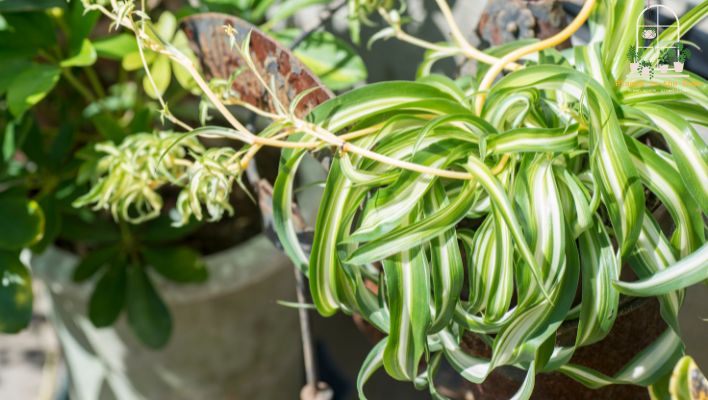
The Spider Plant is one of the best indoor plants for people with breathing problems. It’s good at cleaning the air and very easy to care for.
Spider Plants are known to be one of the best plants for cleaning the air inside homes. They are really good at getting rid of a harmful thing called formaldehyde, which can often be found in our homes. This harmful thing can make breathing problems worse.
The best part about Spider Plants is that they’re not harmful to people or pets and are very strong and easy to take care of. Even if you’re new to taking care of plants, a Spider Plant can be a great choice.
2. Snake Plant (Sansevieria)
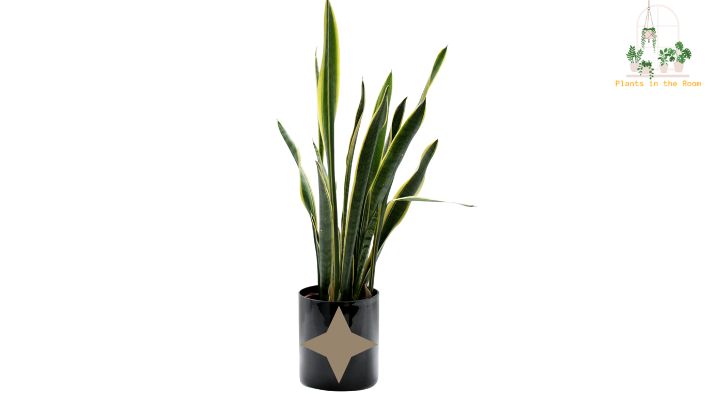
The Snake Plant, sometimes called the mother-in-law’s tongue, is another really good plant for people with breathing problems.
What’s special about Snake Plants is that they turn carbon dioxide into oxygen at night. Most plants only do this during the day. This means that Snake Plants can help increase the amount of oxygen in our homes at night, which can be really helpful for people with severe asthma.
3. Peace Lily (Spathiphyllum)
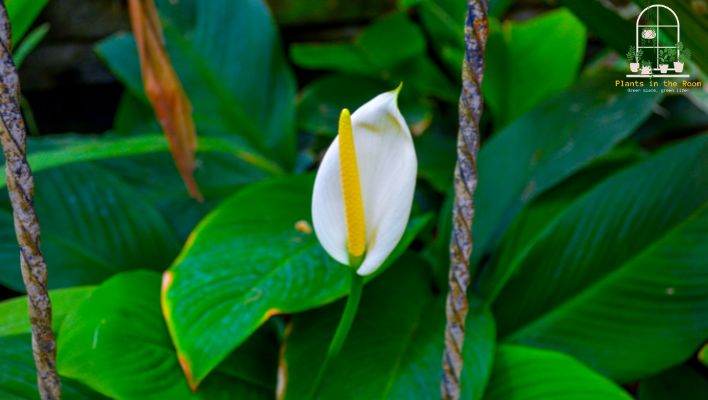
The Peace Lily is a beautiful plant that’s also really good for improving the air quality inside our homes.
Not only do Peace Lilies get rid of harmful things from the air, like benzene, formaldehyde, and trichloroethylene, but they also add moisture to the air. This means they can help make the air inside our homes cleaner and prevent our noses and throats from getting too dry. Both these things can be really helpful for people with breathing problems.
4. English Ivy (Hedera helix)

English Ivy is a plant that can help reduce the risk of asthma attacks in people who are sensitive to mold.
People with asthma can have an asthma attack if they’re around the mold. English Ivy can help with this because it’s good at reducing the amount of mold in our homes. So, having English Ivy in your home can help reduce the risk of having an asthma attack caused by mold.
Factors to Consider When Choosing Indoor Plants
When selecting indoor plants for individuals with breathing problems, several key factors must be considered to ensure the best possible outcomes for respiratory health. By paying attention to these aspects, you can choose plants that are well-suited for promoting clean and healthy indoor air.
Allergies and Sensitivities
Allergies can greatly impact respiratory health, and certain indoor plants may trigger allergic reactions in sensitive individuals. Assessing any known allergies within the household before introducing new plants is crucial.
Consult with healthcare professionals or conduct allergy tests to identify potential plant allergens and avoid selecting plants that may cause adverse reactions. This step will help ensure that the chosen plants are compatible with the respiratory sensitivities of the individuals in the environment.
Proper Plant Care and Maintenance
Proper care and maintenance practices for indoor plants are essential for optimizing air quality and minimizing potential respiratory irritants. Two critical aspects of plant care to focus on are watering and dusting.
Watering Practices
Overwatering indoor plants can lead to excessive moisture in the soil, creating an environment conducive to mold growth. Mold spores can aggravate respiratory conditions, such as asthma. It is important to water plants appropriately, partially allowing the soil to dry out between watering sessions.
Ensure that the plant containers have proper drainage to prevent water accumulation. You can minimize the risk of mold-related respiratory issues by practicing proper watering techniques.
Dusting Plant Leaves
Dust particles can settle on the leaves of indoor plants over time, becoming potential triggers for respiratory symptoms when disturbed. Regular dusting of plant leaves is a crucial maintenance practice to minimize the presence of airborne particles.
Gently wipe the leaves with a damp cloth or use a soft brush to remove dust buildup. This practice helps to create a cleaner environment and reduces the likelihood of respiratory irritants being released into the air.
In Conclusion
While not a cure-all, indoor plants can certainly contribute to healthier air and improved respiratory health. Choosing the right indoor plants and properly caring for them can help create a healthier, more breathable environment for those living with asthma and other respiratory conditions.
The peace lily, snake plant, English ivy, and spider plant are all excellent choices, each with unique abilities to cleanse and purify the air. With the added precautions to check for potential allergens and ensure proper plant care, you can turn your home into a breathing oasis amidst a bustling urban life.

